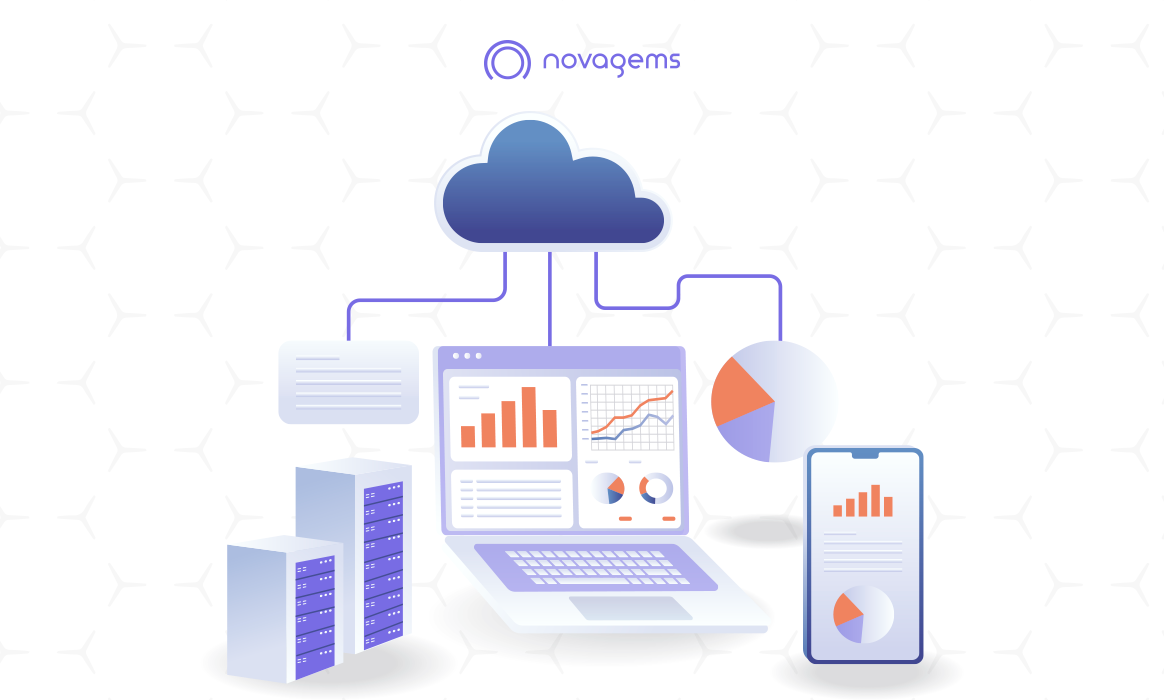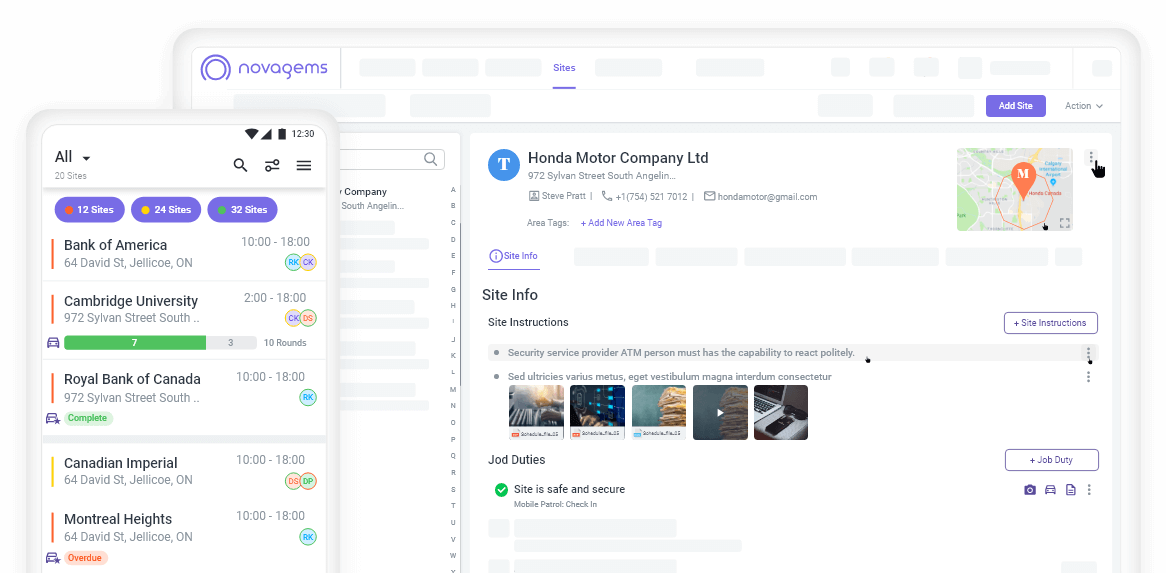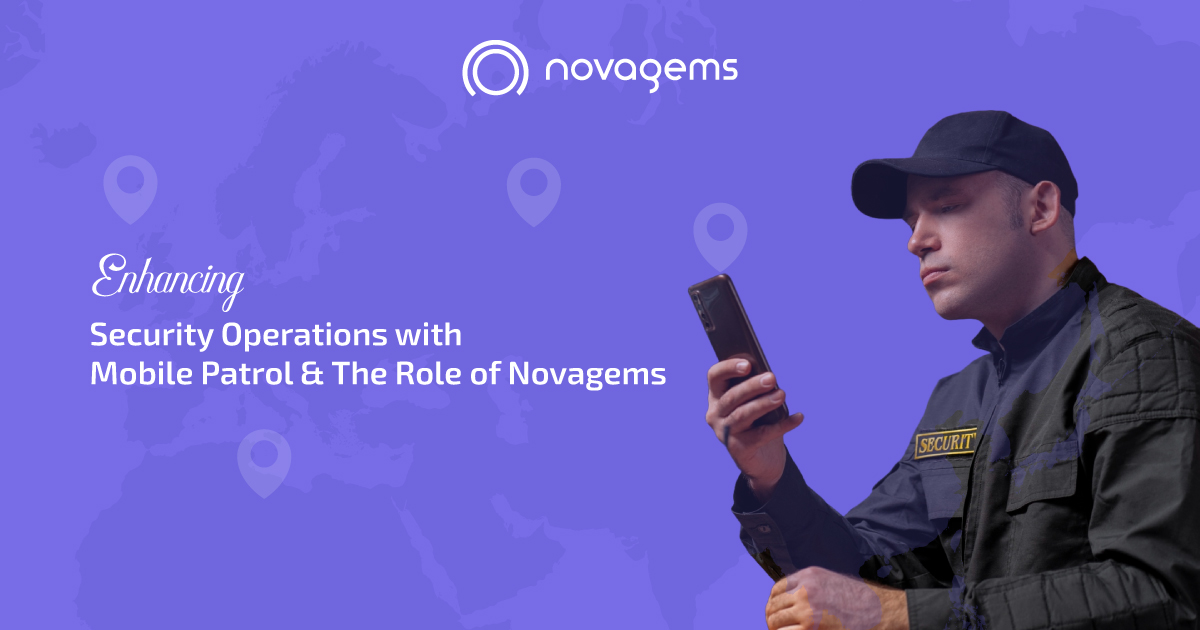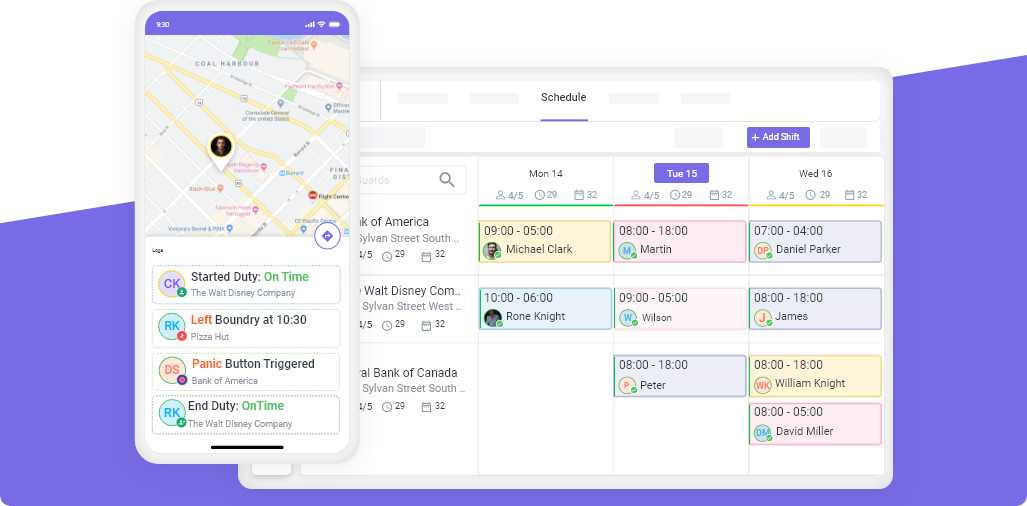Data-Driven Decision Making In Cleaning Management
Published on: Mon, Jun 26, 2023
Last updated: 2025-10-07
Read in 12 minutes

Key Takeaways
- Using data turns cleaning operations from reactive to proactive and optimizes costs, quality, and productivity.
- Key metrics to track include task compliance, time per task, client complaints, staff utilization, and cost per square foot.
- Challenges like data quality, staff adoption, and tool integration must be addressed strategically.
- Progressive trends include predictive analytics, IoT sensors, anomaly detection, and AI.
- Platforms like Novagems (or equivalents) can help collect, visualize, and act on cleaning data — helping you deliver transparency to clients and improve operations.
In the dynamic and competitive cleaning industry, making informed decisions is essential for achieving operational excellence. By embracing data-driven decision making, cleaning management can unlock valuable insights to optimize processes, enhance customer satisfaction, and drive business growth. In this blog post, we will explore the power of data-driven decision making in cleaning management, highlighting its benefits and providing practical tips for leveraging data effectively.
The whole process of cleaning may seem easy enough. You allot your crew some task to clean, they see what is dirty and they clean it. But things are not so two dimensional as you might have thought. The data that is needed in meeting long term and short term goals, making informed decisions, meeting customer needs and demands and increasing customer satisfaction is a tricky task.
Know What To Look For
You cannot make informed and data driven decisions if you don’t know what you are looking for. All of your data driven decision making may not be necessarily related to financial data. Some questions might be -
- What areas require our attention for improvement?
- In which sectors should we maintain our efforts?
- What is generating profits for us versus what is not?
Data organization is important as it prevents the employees from feeling overwhelmed and frustrated. For your employees, you need to ask how they can manage their operations and their insights will help you build and grow as they are the ones dealing with the customers everyday.
Why Data Matters in Cleaning Management
Managing a cleaning operation without data is like driving blindfolded. You rely on intuition, anecdotal feedback, and luck. But data gives you:
- Visibility & accountability — you know exactly what tasks were done, by whom, and when.
- Early detection of problems — spot underperforming sites or staff before they turn into client complaints.
- Performance benchmarking — compare sites, shifts, or teams using objective metrics.
Better resource allocation — divert staff where demand is highest. - Client confidence & retention — clients like to see dashboards, reports, and transparency.
One industry study showed that service firms using data analytics reduced operational costs by 15–25% on average (source varied across sectors). (You would want to find a cleaning/facilities report to cite.)
Gathering And Analyzing Relevant Data
To harness the power of data-driven decision making, cleaning management needs to have access to relevant and accurate data. This requires implementing systems and processes for data collection and organization. Key areas to focus on include capturing customer feedback, monitoring employee performance, tracking resource usage, and analyzing financial metrics. Cleaning management software can help automate data collection and provide real-time reports and analytics. By leveraging technology, managers can streamline the data collection process, minimize errors, and gain a holistic view of their operations.
Identifying Key Performance Indicators (KPIs)
Defining and tracking key performance indicators (KPIs) is crucial for effective data-driven decision making. KPIs serve as measurable benchmarks that align with organizational goals and reflect the critical aspects of cleaning management. Examples of KPIs in cleaning management may include customer satisfaction ratings, employee productivity metrics, response times, or resource utilization rates. By monitoring and analyzing these KPIs regularly, managers can identify trends, evaluate performance, and make data-driven decisions to drive continuous improvement.
Operational efficiency will shoot across the sky when you have identified the key performance indicators. You can identify trends and patterns of customer satisfaction and preferences. This empowers managers to locate recurring issues, resource allocation and utilization, and increase service quality.
KPIs Cleaning Companies Should Track
To turn data into actionable insight, you need the right metrics. Here are some essential ones:
- Task Compliance Rate — percentage of assigned tasks actually completed (e.g. 95% compliance).
- Time per Task / Labor Efficiency — average time taken vs expected time per cleaning activity.
- Staff Utilization — percentage of working hours spent in productive cleaning vs idle / travel time.
- Client Complaints / Service Issues — number, type, severity, and trends over time.
- Cost per Square Foot / Cost per Room / Cost per Task — normalize cost for comparing sites.
Quality Audit Scores — internal or third-party inspections (e.g. score of 90/100).
Return Visits / Rework Rate — number of times you need to re-clean an area due to quality failure. - Absenteeism / Turnover — staff availability and churn impact reliability.
- Overtime / Excess Hours — deviation from planned hours.
- Equipment Downtime / Maintenance Metrics — for cleaning machines, etc.
By tracking these consistently, you can spot trends, outliers, and improvement opportunities.
Leveraging Data For Process Optimization:
Data-driven decision making enables cleaning management to optimize processes and workflows. By analyzing operational data, managers can identify bottlenecks, streamline procedures, and allocate resources more effectively. For instance, data may reveal patterns in customer demand, allowing managers to schedule staff efficiently and avoid overstaffing or understaffing. Data analysis can also aid in identifying areas for training and skill development, leading to improved employee performance and customer satisfaction. By leveraging data to optimize processes, cleaning management can enhance efficiency, reduce costs, and deliver a higher level of service and overall it helps in optimizing operations.
Cleaning management metrics can be easily gathered if you have the correct data with you to evaluate. If the data is not correct then your evaluation will be irrelevant and incorrect.
Enhancing Customer Satisfaction And Retention Through Data Analysis:
Data-driven decision making directly impacts customer satisfaction and retention. By doing customer feedback analysis, managers can identify recurring issues or areas for improvement, allowing them to take corrective action promptly. Additionally, data analysis can reveal customer preferences and patterns, enabling managers to personalize services and tailor offerings to meet customer needs. This level of customization and responsiveness enhances customer satisfaction, leading to increased customer loyalty and positive word-of-mouth referrals.
Importance Of Data-Driven Decision Making In Cleaning Management
Data-driven decision making involves using reliable data and analysis to guide strategic and operational choices within cleaning management. By relying on empirical evidence rather than guesswork, managers can make more informed decisions that yield better outcomes. The vast amount of data generated in cleaning operations, such as performance metrics, customer feedback, and resource utilization, can provide valuable insights when analyzed effectively. Data-driven decision making enables businesses to identify trends, spot areas for improvement, and uncover opportunities that may otherwise go unnoticed.
Benefits Of Data-driven Cleaning
Data-driven cleaning refers to the practice of using data and analytics to optimize cleaning processes and strategies. Here are some benefits of implementing data-driven cleaning practices:
Increased Efficiency:
Data analysis helps identify high-traffic areas, peak usage times, and cleaning patterns. This allows for optimized cleaning schedules and resource allocation, ensuring that cleaning efforts are focused where they are most needed.
Data driven cleaning management will not only help you increase the efficiency but boost the productivity of your cleaners and at the same time of your organization. You can easily track the records of your cleaning staff and help the cleaners that are in need of improvement.
Cost Savings:
By targeting cleaning efforts based on data insights, resources such as cleaning supplies and labor can be allocated more efficiently. This reduces unnecessary cleaning in low-traffic areas and minimizes wastage of resources.
Easily manage the costs of running your operations with data driven cleaning management. Once you have the real data in front of you, you can easily gauge where you are spending the extra money. By cutting down on the extra costs, you can track and maintain the finances easily.
Improved Cleaning Quality:
Data-driven cleaning ensures that cleaning tasks are performed consistently and thoroughly in high-priority areas. This leads to a higher standard of cleanliness and hygiene.
Data driven cleaning management helps you manage the quality of your work and increase the efficiency of your staff. This helps you in gaining more customers as everyone looks for improved and high cleaning quality.you should always aim for high quality services and look for room for improvement.
Health and Safety:
Data analysis can identify areas that require extra attention due to higher levels of contamination or risk. This is especially crucial in environments where health and safety are paramount, such as healthcare facilities.
Data driven cleaning management helps you avoid any health and safety hazards. You can protect your employees and your organization against any false claims when you have all of the data available with you.
Enhanced Productivity:
Cleaning staff can work more efficiently when armed with data-driven cleaning management insights. They can focus on critical areas and tasks, leading to increased productivity and reduced time wastage.
Predictive Maintenance:
Monitoring cleaning equipment using data can help predict maintenance needs before breakdowns occur. This minimizes downtime and ensures that equipment operates optimally.
Data-driven cleaning management involves monitoring cleaning equipment using data to predict maintenance needs. This must be done before any breakdowns happen and you have to pay extra to repair the equipment.
Real-time Monitoring:
Sensors and IoT devices can provide real-time data on occupancy, cleanliness levels, and other relevant metrics. This enables prompt responses to changing conditions and needs.
Data driven cleaning management allows you to monitor the cleaners and you can easily make any changes or send any instructions whenever needed. Your cleaners will be notified of the changes and change in instructions instantly and this will reduce any errors occurring in miscommunication.
Customized Cleaning Plans:
Data allows for the creation of tailored cleaning plans for different areas based on their specific usage patterns and requirements.
Data driven cleaning management allows you to not only analyze your staff but the behaviors of your clients as well. Keep an eye on what they like and how they like their homes being cleaned and you can use those points in retaining them. If your clients are satisfied with your work, it is unlikely they will look for an alternative.
Evidence-Based Decision Making:
Data-driven insights provide evidence to support decisions related to cleaning practices, staffing levels, and resource allocation.
Data driven decision making is only possible with data driven cleaning management systems. It allows you to have a well informed approach regarding any issues your employees are facing. This will help in avoiding biases and any errors when making a decision.
Customer Satisfaction:
In environments like hospitality, retail, and commercial spaces, maintaining a clean and well-maintained environment directly contributes to positive customer experiences and satisfaction.
Customer satisfaction is the top priority of any organization. Especially in the cleaning industry where your customers have a lot of options available you need to work on your strategies to retain the customers as well. Data driven cleaning management gives you all the tools and information for that.
How to Implement Data-Driven Practices in Your Cleaning Business
Adopting data is a process — not a flip switch. Here’s a roadmap:
Audit your current operations & pain points
- Where do clients complain the most?
- Which sites are high cost or low quality?
- What manual logs are you already using?
Decide on your data collection methods
- Use mobile apps or check-in scans (QR, NFC) for task logging
- Use timestamps, sensors, or IoT devices for area usage/footfall
- Use client feedback modules to record complaints and ratings
Choose a platform/tool
- Use a system that integrates scheduling, task logging, performance dashboards, alerts
- Ensure the tool supports exporting data / API integration
- Platforms like Novagems offer modules to help you collect guard/cleaner logs, analyze site performance, and generate client reports
Set baseline targets & benchmarks
- Before you optimize, measure current state for a period (e.g. 30 days)
- Set realistic initial targets (e.g. achieve 90% task compliance)
Train staff & secure buy-in
- Explain why the data is being collected (improvement, fairness, recognition)
- Show staff dashboards or personal performance feedback
- Use gamification/recognition for high performers
Visualize & act
- Use dashboards (trend charts, heat maps) to spot issues
- Drill down into outliers: e.g. “Site A’s restroom tasks are consistently delayed”
- Create action plans: reallocate staff, rework routes, retrain
Review regularly & iterate
- Hold weekly/monthly review meetings
- Update benchmarks as you improve
- Expand metrics gradually (predictive, anomaly detection
Challenges, Risks & How to Mitigate Them
Data adoption isn’t free of hurdles. Here are common challenges and mitigation strategies:
Data quality & accuracy
- Risk: staff forget to log tasks or enter wrong data
- Mitigation: make logging mandatory via app, use check-ins like QR / NFC, audits
Staff resistance / “feeling watched”
- Risk: staff feel micromanaged
- Mitigation: communicate purpose transparently, use data for coaching & recognition, not punishment
Overwhelming volumes of data
- Risk: drowning in metrics with no clear action
- Mitigation: start with 3–5 key metrics, build dashboards, set alert thresholds
Integration with legacy systems
- Risk: data silos, duplication of effort
- Mitigation: pick modular systems with APIs, migrate gradually
Cost of tools & infrastructure
- Risk: platforms or sensors may seem expensive upfront
- Mitigation: start small (pilot site), evaluate ROI (cost saved, complaints reduced), scale
Data privacy/compliance issues
- Ensure compliance with local privacy laws (e.g., GDPR, PII handling)
- Use role-based access controls, secure storage, encryption
Next-Gen Trends: What’s Coming in Data-Driven Cleaning Management
To stay ahead, watch for:
- Predictive maintenance / predictive cleaning — using usage data or sensor input to clean proactively before clients notice.
- Anomaly detection / alerts — AI detecting deviations in patterns (e.g. sudden drop in cleaned areas or over-time spikes).
- Smart building integrations — linking occupancy sensors, HVAC, lighting data to cleaning schedules.
- Voice / sensor input / automation — hands-free voice logging, sensors triggering tasks automatically.
- Prescriptive analytics — the system suggests “move one cleaner from Site B to Site C tomorrow morning because usage spike expected.”
- Client-facing analytics portals — giving clients interactive dashboards showing your performance in real time.
Adopting these sooner helps you differentiate and become a forward-looking service provider.
Conclusion Drawn
Data-driven decision making has become an indispensable tool for cleaning management. By harnessing the power of data, cleaning businesses can optimize operations, drive customer satisfaction, and achieve long-term success in the competitive cleaning industry. In the cleaning industry you need to have cleaning management software that will provide you real data to make the right decisions.
Frequently Asked Questions
What metrics should cleaning companies track first?
Start with task compliance, time per task, staff utilization, and client complaints.
How do you collect data in on-the-ground cleaning operations?
Use mobile apps, QR / NFC check-in points, sensors, and client feedback modules.
Does collecting data make staff feel monitored or distrusted?
If communicated well, data can empower staff by giving transparency and recognition. Avoid punitive framing.
What is a realistic ROI timeline?
Many companies see improved compliance and cost efficiencies in 3–6 months after rollout.
Can Novagems support these data capabilities?
Yes — platforms like Novagems include modules for logging tasks, generating dashboards, analyzing performance, and sharing reports. By using such tools, you not only get data — you also meet client expectations around transparency and accountability.
Get a Free Trial
Sign up For Newsletter
Latest Blog Posts
Get Started
Start being productive & grow your business
with Novagems





